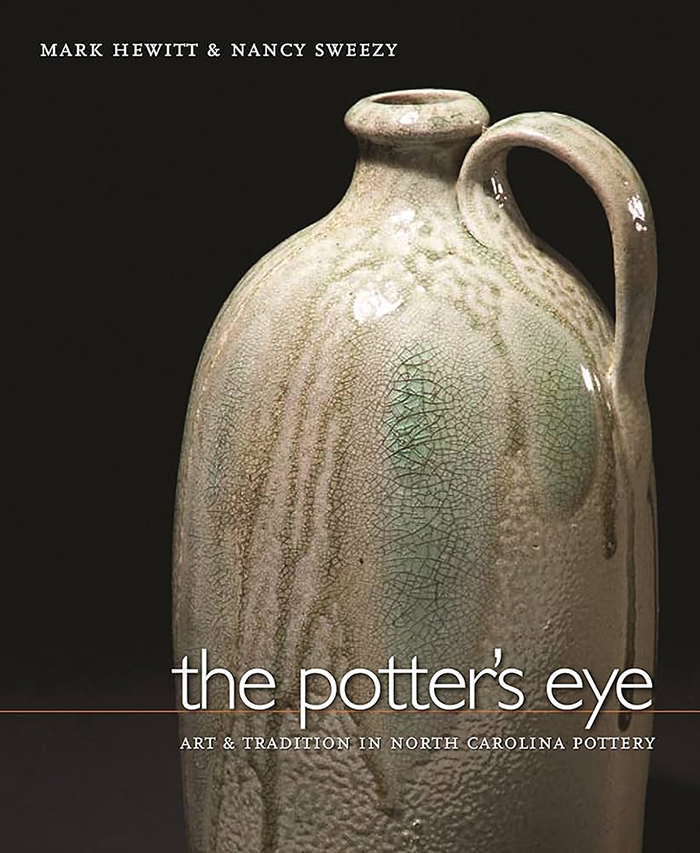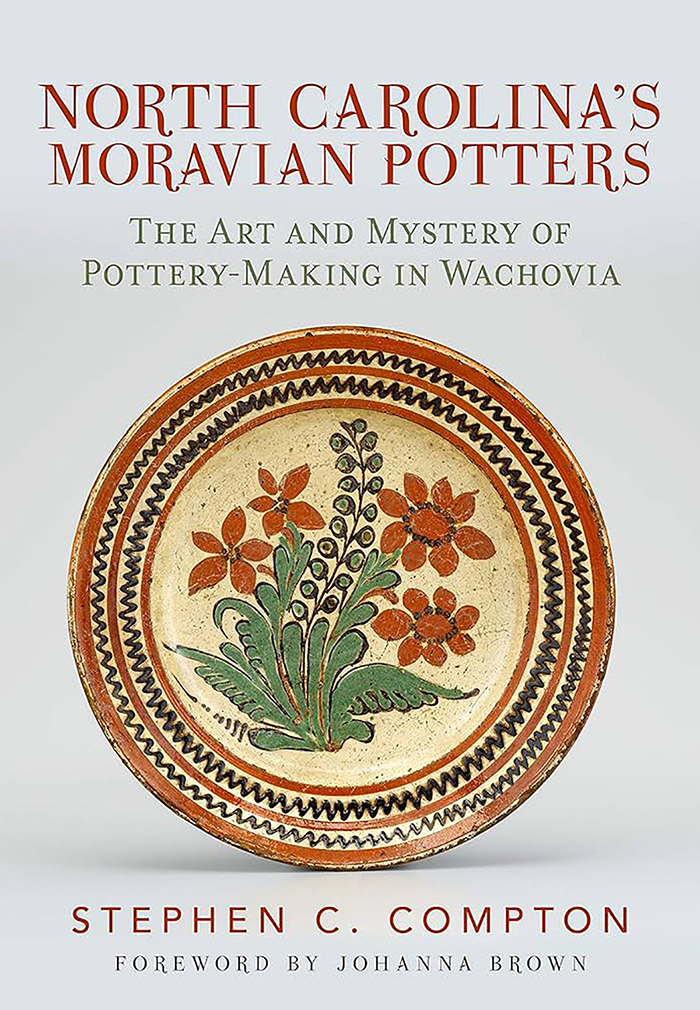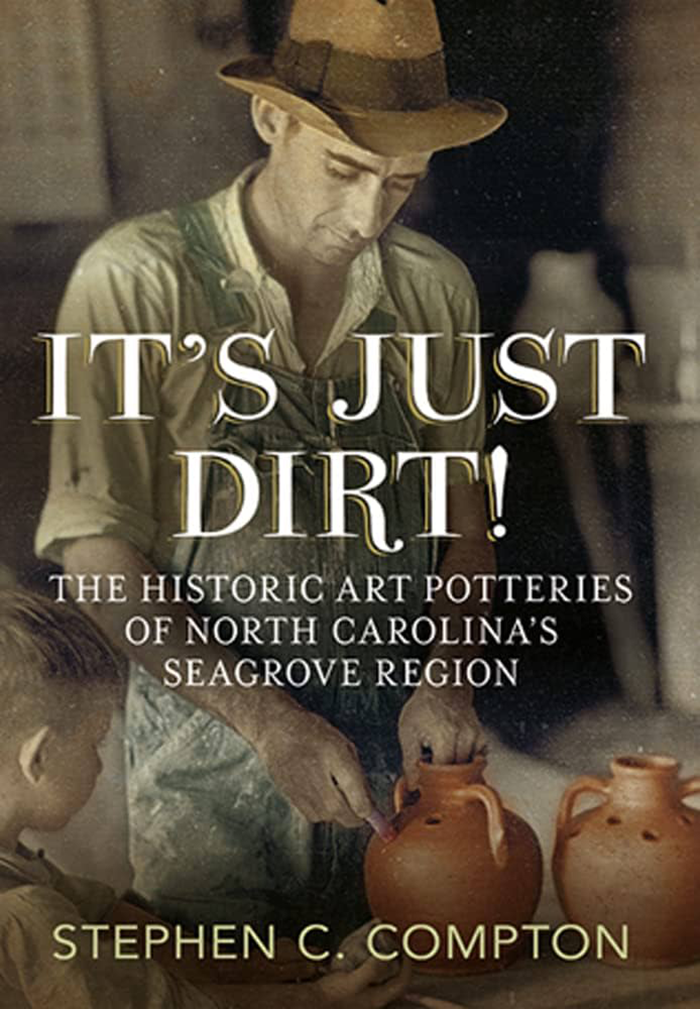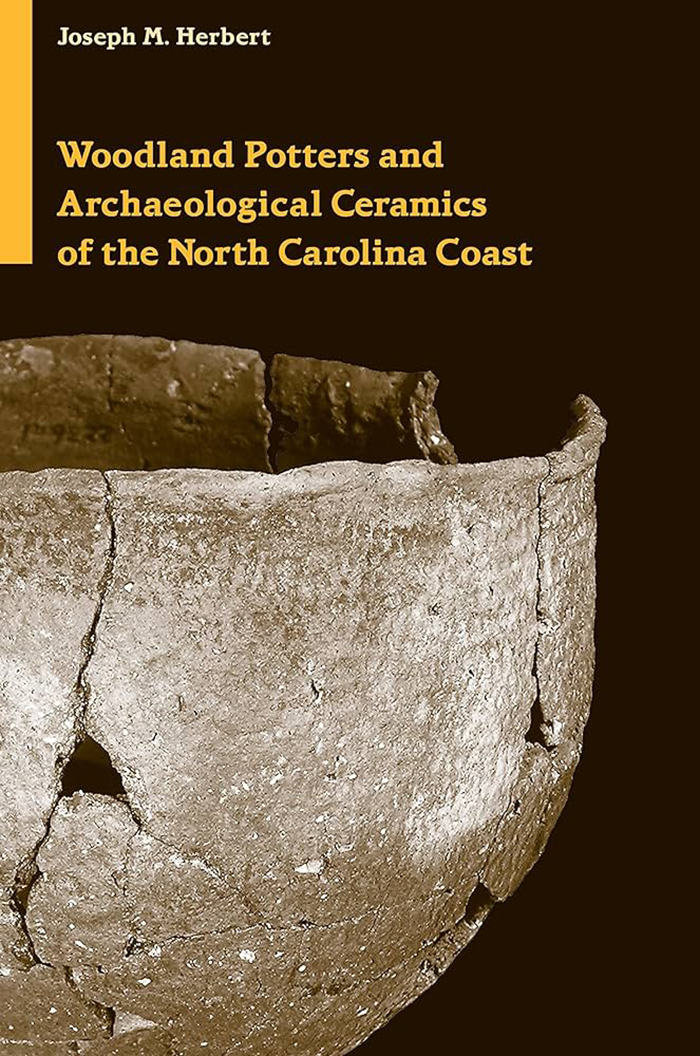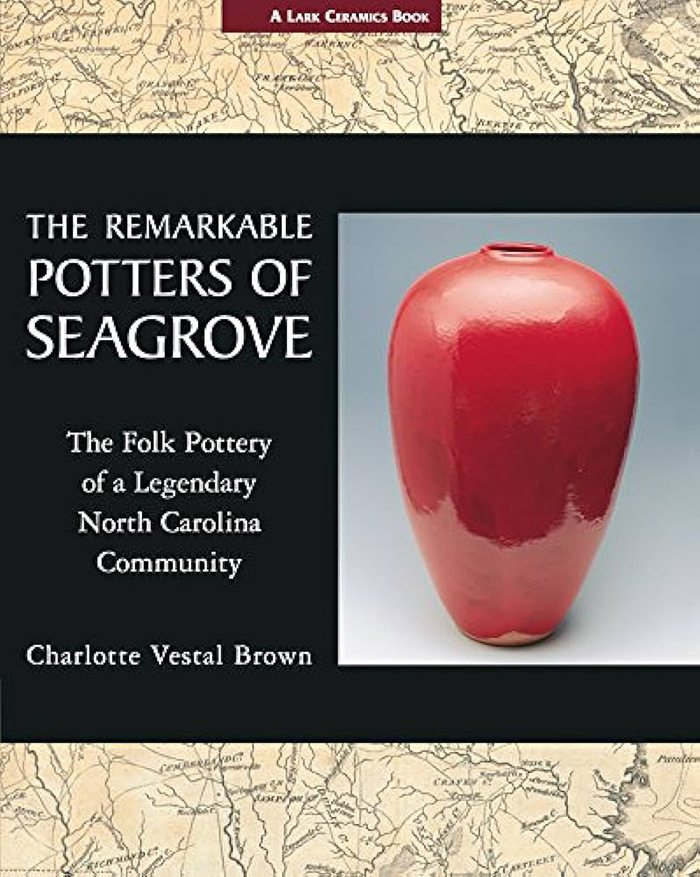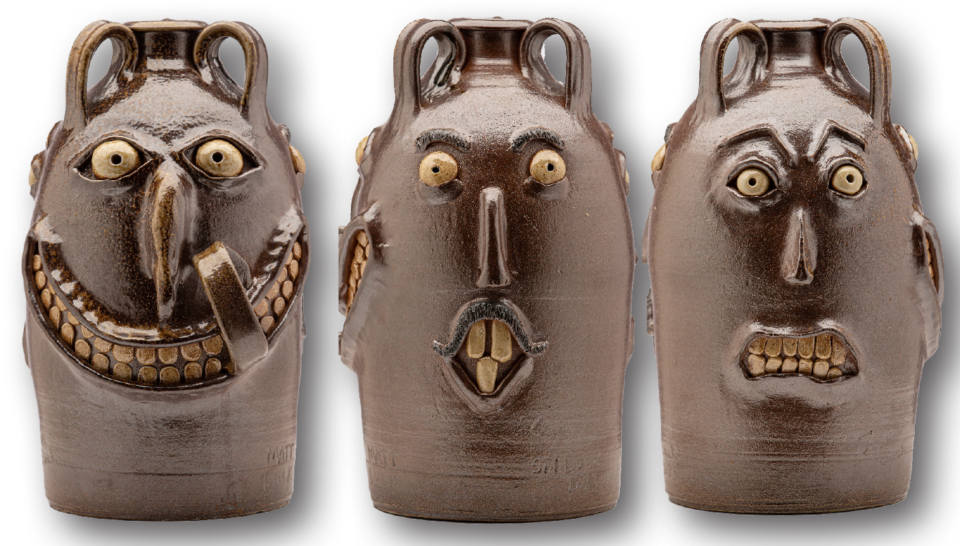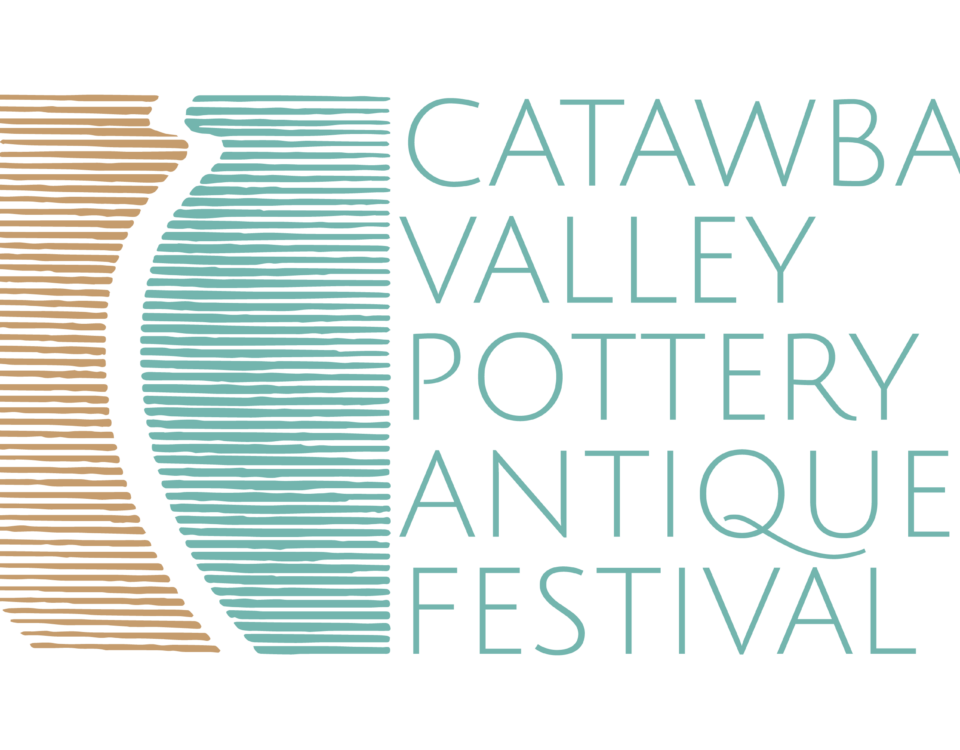
Fire and Clay: The Story of North Carolina Pottery
January 8, 2024
Art Prints for Sale
January 20, 2024As we were researching for this magazine, we discovered a wealth of excellent books on the subject of North Carolina pottery. Here are a few of our very favorites, although there are many more impactful books that didn't make our list.
"The Potter's Eye: Art and Tradition in North Carolina Pottery" by Mark Hewitt and Nancy Sweezy is a visually stunning and comprehensive examination of North Carolina's celebrated stoneware pottery tradition. The book traces the evolution of this craft from the 19th century to the present, showcasing its rich textures, monochromatic glazes, and understated decoration. The authors explore the connections between North Carolina pottery and various global pottery traditions, including those in Europe, Asia, New England, and neighboring South Carolina. Featuring hundreds of color photographs, this book highlights the distinctive shapes and surfaces of select pots, emphasizing the skill and attention to detail of North Carolina potters. "The Potter's Eye" serves not only as a historical account but also as an artistic guide, celebrating the materials, tools, techniques, and history that define this enduring and aesthetically rich pottery tradition. It is an essential read for anyone fascinated by North Carolina pottery and the beauty inherent in this age-old art form.
"The Potter's Eye: Art and Tradition in North Carolina Pottery" by Mark Hewitt and Nancy Sweezy is a visually stunning and comprehensive examination of North Carolina's celebrated stoneware pottery tradition. The book traces the evolution of this craft from the 19th century to the present, showcasing its rich textures, monochromatic glazes, and understated decoration. The authors explore the connections between North Carolina pottery and various global pottery traditions, including those in Europe, Asia, New England, and neighboring South Carolina. Featuring hundreds of color photographs, this book highlights the distinctive shapes and surfaces of select pots, emphasizing the skill and attention to detail of North Carolina potters. "The Potter's Eye" serves not only as a historical account but also as an artistic guide, celebrating the materials, tools, techniques, and history that define this enduring and aesthetically rich pottery tradition. It is an essential read for anyone fascinated by North Carolina pottery and the beauty inherent in this age-old art form.
"Turners and Burners: The Folk Potters of North Carolina" by Terry Zug offers a comprehensive exploration of North Carolina's rich pottery traditions, tracing back from the mid-18th to the early 20th century. This detailed portrait delves into the lives of generations of potters known for their durable and beautiful creations. The book highlights the state's unique and continuous ceramic heritage, examining both historical and contemporary aspects. It focuses on everyday earthenware and stoneware items like jars, jugs, and churns, crafted for specific functions and embedded in daily life. Zug's research, initiated in 1969, involved extensive travel across North Carolina, documenting potters' stories, photographing and cataloging ancient pottery, and locating historical sites. The book stands out for its use of firsthand accounts from potters, providing an intimate view of their craft and its evolution. It's a tribute to the state's enduring pottery legacy, emphasizing traditional techniques such as the treadle wheel and groundhog kiln, and offering insight into regional patterns and the major potter families.
"North Carolina's Moravian Potters: The Art and Mystery of Pottery-Making in Wachovia" by Stephen C. Compton, with a foreword by Johanna Brown, delves into the remarkable history of Moravian pottery in 18th and 19th-century North Carolina. This book explores the diverse range of products crafted by these skilled artisans, including earthenware, decorated ware, fine pottery, stove tiles, figural bottles, toys, and stoneware. It begins with the arrival of Gottfried Aust, a Silesian-born and German-trained potter, in Bethabara in 1755, and traces the lineage of his apprentices, some of whom became master potters. Special attention is given to Aust's most successful protégé, Rudolph Christ, known for his work in Queensware, faience, and tortoiseshell-glazed pottery, and to Heinrich Schaffner, noted for his "Salem smoking pipes." The book highlights how these Moravian potters left an indelible mark on the craft, with their works now highly sought after by museums and collectors. Each preserved piece of Moravian pottery is celebrated as a valuable addition to the rich story of pottery-making in one of the South's earliest settlements, offering insights into the art and mystery that defined this unique tradition.
"North Carolina's Moravian Potters: The Art and Mystery of Pottery-Making in Wachovia" by Stephen C. Compton, with a foreword by Johanna Brown, delves into the remarkable history of Moravian pottery in 18th and 19th-century North Carolina. This book explores the diverse range of products crafted by these skilled artisans, including earthenware, decorated ware, fine pottery, stove tiles, figural bottles, toys, and stoneware. It begins with the arrival of Gottfried Aust, a Silesian-born and German-trained potter, in Bethabara in 1755, and traces the lineage of his apprentices, some of whom became master potters. Special attention is given to Aust's most successful protégé, Rudolph Christ, known for his work in Queensware, faience, and tortoiseshell-glazed pottery, and to Heinrich Schaffner, noted for his "Salem smoking pipes." The book highlights how these Moravian potters left an indelible mark on the craft, with their works now highly sought after by museums and collectors. Each preserved piece of Moravian pottery is celebrated as a valuable addition to the rich story of pottery-making in one of the South's earliest settlements, offering insights into the art and mystery that defined this unique tradition.
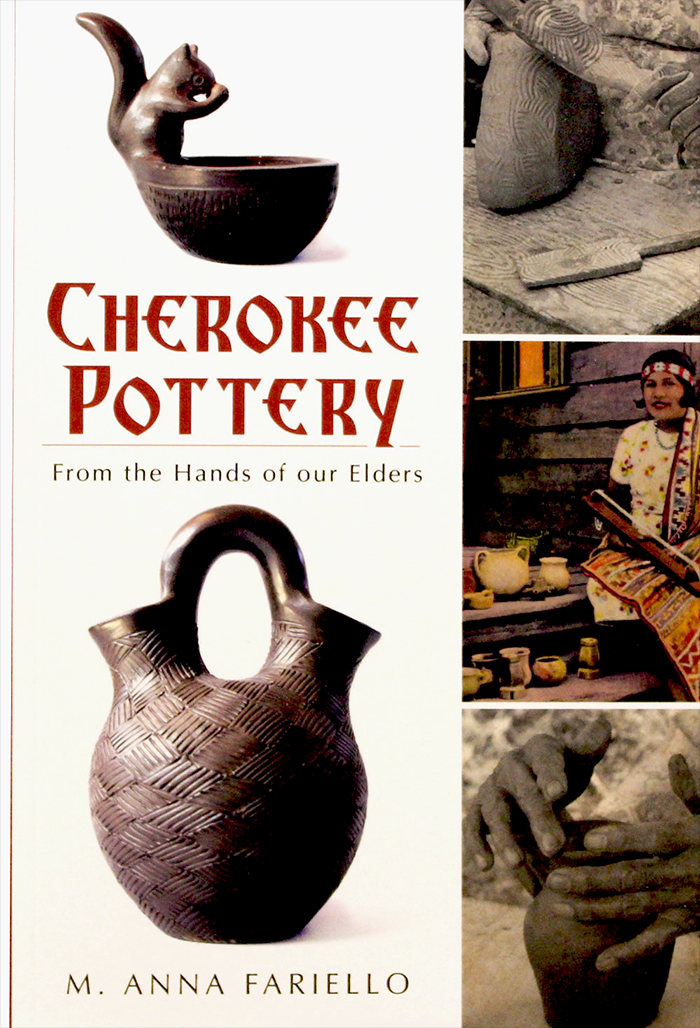
"Cherokee Pottery: From the Hands of Our Elders" by M. Anna Fariello, with an insightful introduction by Jane Eastman, is an evocative and in-depth exploration of the rich and vibrant tradition of Cherokee pottery in Western North Carolina. As a part of the American Heritage series, this book offers a thorough journey into the centuries-old art of Cherokee pottery, a craft distinguished by its intricate designs and complex patterns. M. Anna Fariello, an esteemed associate professor at Western Carolina University, meticulously documents the process of this art form as it is lovingly and skillfully passed down from generation to generation, ensuring the preservation of a deeply valued heritage.
In her book, Fariello not only delves into the specific techniques and profound meanings that are inherent in each piece of Cherokee pottery but also brings to light the personal stories and experiences of the Cherokee women who are the custodians of this age-old practice. These narratives add a rich, personal dimension to the understanding of the pottery-making process.
"Cherokee Pottery" is more than just a historical account; it's a vivid portrayal of an artistic tradition that holds great cultural significance. The book emphasizes the continuity of craftsmanship within the Cherokee community, showcasing how these artistic practices have stood the test of time. It serves as a powerful testament to the resilience, dedication, and skill of the Cherokee potters, whose creations are not merely objects of beauty but also profound expressions of their rich cultural heritage and identity. This book is an essential read for anyone interested in the art of pottery, indigenous crafts, and the preservation of cultural traditions.
"Hear Me Now: The Black Potters of Old Edgefield, South Carolina," edited by Adrienne Spinozzi with contributions from Simone Leigh and others, is a groundbreaking work that reexamines the contributions of enslaved and free Black potters in the 19th-century Southern pottery traditions, specifically in Edgefield, South Carolina. This catalogue, published by The Metropolitan Museum of Art and distributed by Yale University Press, offers new perspectives on the region’s stoneware, emphasizing the vital role of Black artists.
The book presents a selection of regional face vessels and showcases the masterpieces of David Drake, an enslaved potter and poet, who remarkably signed, dated, and inscribed verses on his jars despite the criminalization of literacy among enslaved people. Essays included offer critical insights into the production, collection, dispersal, and interpretation of stoneware from Edgefield, exploring the complex dynamics of collecting and exhibiting works created by enslaved artisans.
Additionally, the book features contemporary works inspired by or related to Edgefield stoneware, highlighting the enduring cultural and historical importance of this artistic tradition. An interview with the acclaimed contemporary artist Simone Leigh sheds light on the continuing relevance of these pieces. "Hear Me Now" is a significant contribution to the understanding and appreciation of Southern pottery and the extraordinary skills and resilience of Black potters in American history.
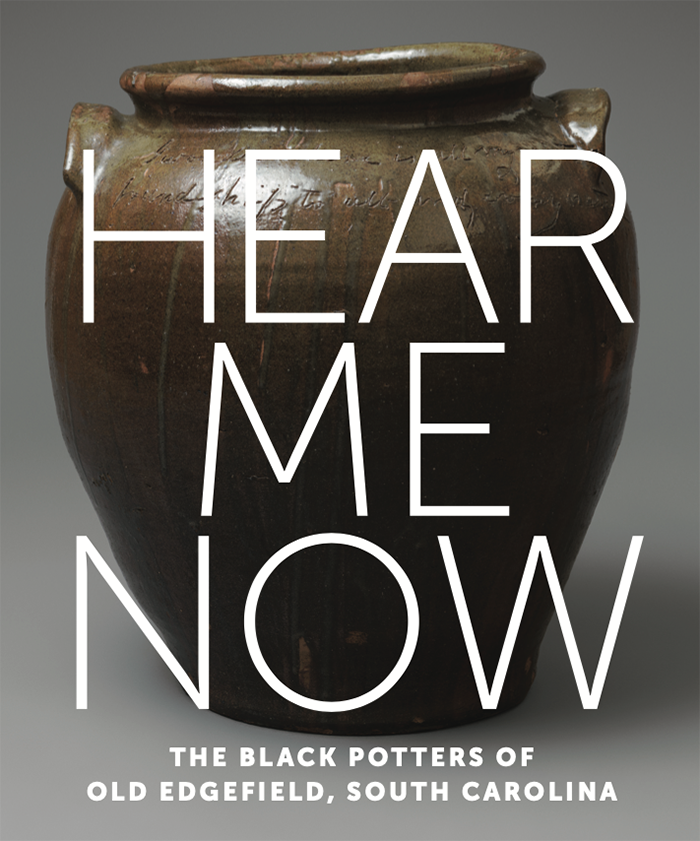

"Hear Me Now: The Black Potters of Old Edgefield, South Carolina," edited by Adrienne Spinozzi with contributions from Simone Leigh and others, is a groundbreaking work that reexamines the contributions of enslaved and free Black potters in the 19th-century Southern pottery traditions, specifically in Edgefield, South Carolina. This catalogue, published by The Metropolitan Museum of Art and distributed by Yale University Press, offers new perspectives on the region’s stoneware, emphasizing the vital role of Black artists.
The book presents a selection of regional face vessels and showcases the masterpieces of David Drake, an enslaved potter and poet, who remarkably signed, dated, and inscribed verses on his jars despite the criminalization of literacy among enslaved people. Essays included offer critical insights into the production, collection, dispersal, and interpretation of stoneware from Edgefield, exploring the complex dynamics of collecting and exhibiting works created by enslaved artisans.
Additionally, the book features contemporary works inspired by or related to Edgefield stoneware, highlighting the enduring cultural and historical importance of this artistic tradition. An interview with the acclaimed contemporary artist Simone Leigh sheds light on the continuing relevance of these pieces. "Hear Me Now" is a significant contribution to the understanding and appreciation of Southern pottery and the extraordinary skills and resilience of Black potters in American history.
"It’s Just Dirt! The Historic Art Potteries of North Carolina’s Seagrove Region" by Stephen C. Compton is a captivating narrative that delves into the rich history and enduring legacy of the art potteries in North Carolina's Seagrove region. The book opens with the story of Neolia Cole, the daughter of potter Arthur Ray Cole, who epitomizes the resilient spirit that has sustained the Cole family's pottery-making tradition for over two centuries. Neolia's anecdote about the revenue generated from Cole's Pottery, despite its modest pricing, underscores the humble yet significant impact of their craft.
Compton's work reveals that while pottery may seem like "just dirt," it encompasses much more, especially in the context of North Carolina's early 20th-century art potteries. The book chronicles a success story characterized by adaptation, innovation, collaboration, and immense hard work. It highlights how these attributes have contributed to the remarkable achievements of the region's pottery industry. This story is not just about the creation of pottery but also about the legacy that these art potteries have left behind, a legacy that continues to thrive today. The book is a tribute to the art form and the artisans, offering insights into the world of collectors and enthusiasts who recognize the value and beauty extending far beyond the simple material of dirt.
"Woodland Potters and Archaeological Ceramics of the North Carolina Coast" by Joseph M. Herbert is an innovative and comprehensive study that delves into the multifaceted role of pottery in the social fabric of coastal North Carolina. This work is a first-of-its-kind exploration, critically examining the relationships and meanings behind various pottery types that have been identified across different periods and areas of the Atlantic coast. Herbert challenges the long-held notion of ceramic types serving as ethnic markers, suggesting a more complex interplay of factors at work.
The book employs ethnoarchaeological case studies and replication experimentation as key methodologies. Through these approaches, Herbert assesses how social structures, gender roles, and cultural practices have shaped the transmission and development of pottery-making techniques. He explores how socio-cultural boundaries are reflected in the distribution and evolution of ceramic traditions, offering new perspectives on the interaction between communities and their crafts.
Significantly, the study also tests the proposition that communities of practice in pottery existed at various scales along the North Carolina coast. By analyzing how pottery traits cross-cut taxonomic types, the book provides a deeper understanding of the dynamics of pottery production and its role in societal interactions.
"Woodland Potters and Archaeological Ceramics of the North Carolina Coast" is more than an archaeological study; it's an insightful investigation into the social activities and cultural expressions encapsulated in the pottery traditions of coastal North Carolina. It serves as an essential resource for understanding the intricate relationship between social life and material culture in this region.
"Woodland Potters and Archaeological Ceramics of the North Carolina Coast" by Joseph M. Herbert is an innovative and comprehensive study that delves into the multifaceted role of pottery in the social fabric of coastal North Carolina. This work is a first-of-its-kind exploration, critically examining the relationships and meanings behind various pottery types that have been identified across different periods and areas of the Atlantic coast. Herbert challenges the long-held notion of ceramic types serving as ethnic markers, suggesting a more complex interplay of factors at work.
The book employs ethnoarchaeological case studies and replication experimentation as key methodologies. Through these approaches, Herbert assesses how social structures, gender roles, and cultural practices have shaped the transmission and development of pottery-making techniques. He explores how socio-cultural boundaries are reflected in the distribution and evolution of ceramic traditions, offering new perspectives on the interaction between communities and their crafts.
Significantly, the study also tests the proposition that communities of practice in pottery existed at various scales along the North Carolina coast. By analyzing how pottery traits cross-cut taxonomic types, the book provides a deeper understanding of the dynamics of pottery production and its role in societal interactions.
"Woodland Potters and Archaeological Ceramics of the North Carolina Coast" is more than an archaeological study; it's an insightful investigation into the social activities and cultural expressions encapsulated in the pottery traditions of coastal North Carolina. It serves as an essential resource for understanding the intricate relationship between social life and material culture in this region.
"THE TRADITIONAL POTTERY OF NORTH CAROLINA" by Charles G. Zug III, published in 1981, is a seminal work by a renowned authority on North Carolina pottery, especially noted for his expertise in Catawba Valley pottery. Zug's comprehensive study delves into the rich and diverse traditions of pottery making in North Carolina, a state with a deeply embedded and historically significant pottery culture.
The book offers an in-depth exploration of various pottery forms, techniques, and the cultural significance of these practices in North Carolina. Zug pays special attention to the Catawba Valley, known for its distinctive pottery style and skilled artisans. His analysis encompasses the historical development of pottery in the region, the evolution of styles, and the techniques used by traditional potters.
Zug's work is not just a historical account; it is a tribute to the art and skill of North Carolina potters. He examines how these traditions have been preserved and transformed over generations, reflecting the social, economic, and cultural changes in the region. His authoritative voice provides valuable insights into the pottery-making process, from the sourcing of materials to the firing techniques, making this book a must-read for enthusiasts and scholars of pottery, as well as those interested in the broader aspects of cultural heritage and crafts in North Carolina.
"North Carolina Potteries Through Time" by Stephen C. Compton, released on May 22, 2017, is an engaging and comprehensive exploration of the rich history of pottery in North Carolina, a state often dubbed as 'America's pottery state.' This book traces the evolution of pottery in the region, beginning with prehistoric Native American potters, followed by 18th-century English and German settlers, and leading up to the contemporary potters and ceramic artists who are active throughout the state today.
The town of Seagrove, a central hub of pottery, is highlighted for its dedicated museum and educational center that celebrates North Carolina's pottery production. The book also points out the widespread appreciation for this craft, with various private and public collections, and a high demand for these pieces at auctions, antique shops, kiln openings, festivals, and studio sales.
Richly illustrated with images representing all periods and styles of pottery made in the state, many of which are published for the first time, "North Carolina Potteries Through Time" is a visual and informative treat. It caters to a wide audience, from those newly interested in the topic to expert collectors, historians, and potters, offering a satisfying and in-depth look at the diverse and vibrant pottery tradition of North Carolina.
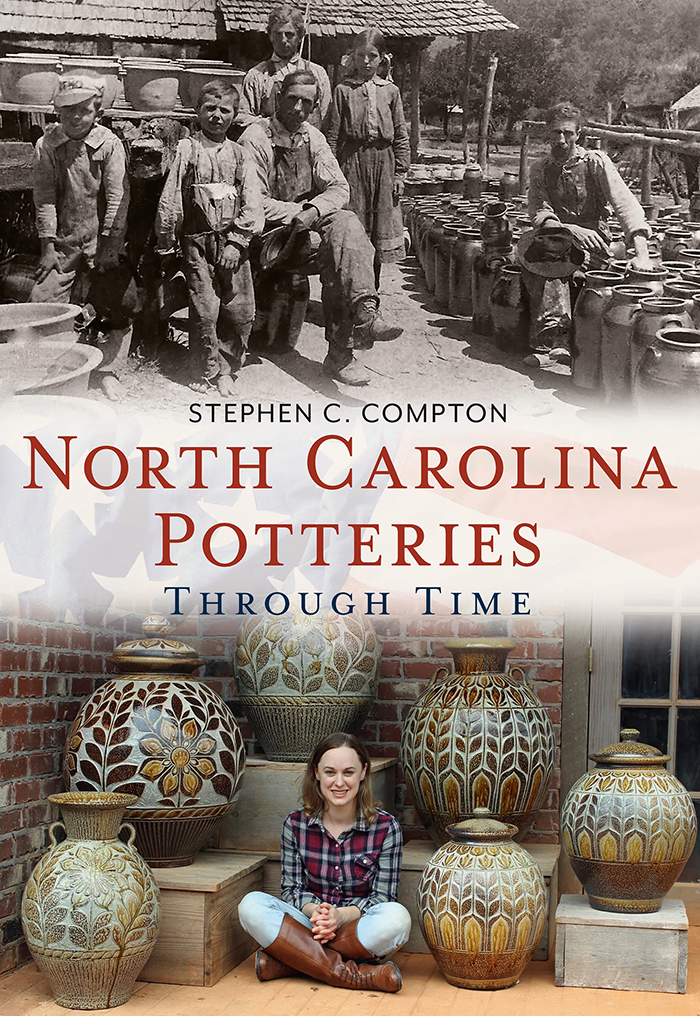

"North Carolina Potteries Through Time" by Stephen C. Compton, released on May 22, 2017, is an engaging and comprehensive exploration of the rich history of pottery in North Carolina, a state often dubbed as 'America's pottery state.' This book traces the evolution of pottery in the region, beginning with prehistoric Native American potters, followed by 18th-century English and German settlers, and leading up to the contemporary potters and ceramic artists who are active throughout the state today.
The town of Seagrove, a central hub of pottery, is highlighted for its dedicated museum and educational center that celebrates North Carolina's pottery production. The book also points out the widespread appreciation for this craft, with various private and public collections, and a high demand for these pieces at auctions, antique shops, kiln openings, festivals, and studio sales.
Richly illustrated with images representing all periods and styles of pottery made in the state, many of which are published for the first time, "North Carolina Potteries Through Time" is a visual and informative treat. It caters to a wide audience, from those newly interested in the topic to expert collectors, historians, and potters, offering a satisfying and in-depth look at the diverse and vibrant pottery tradition of North Carolina.
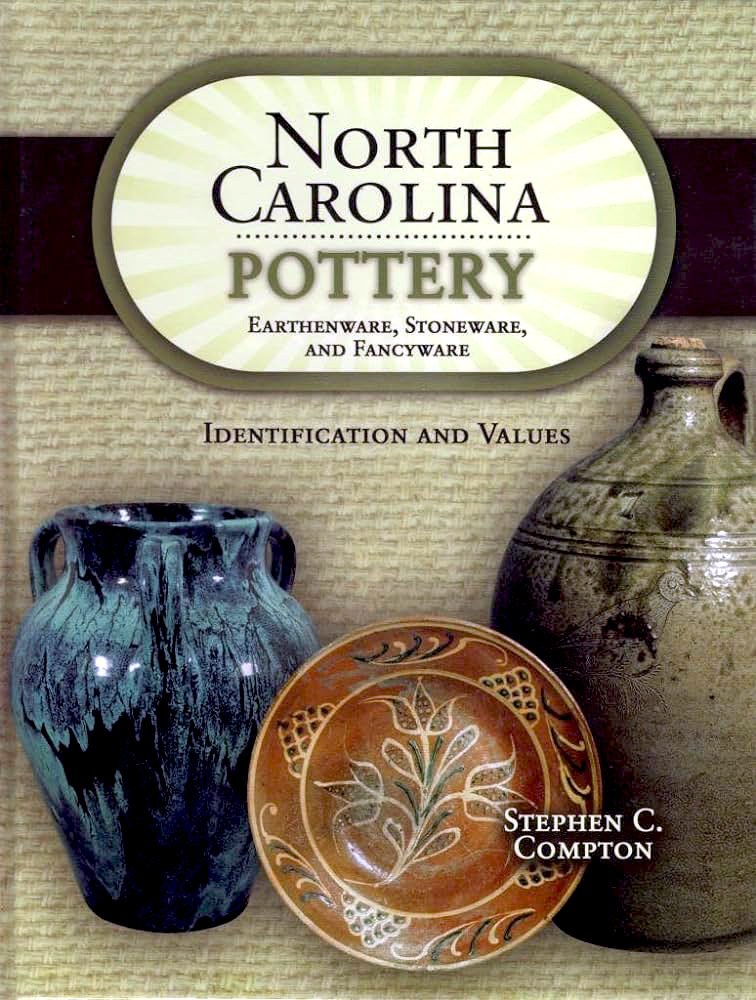
"North Carolina Pottery: Earthenware, Stoneware, and Fancyware, Identification and Values" by Stephen C. Compton, published on September 24, 2010, is a comprehensive and richly illustrated guide for collectors, historians, archaeologists, and enthusiasts of North Carolina pottery. This book is a treasure trove of information, showcasing an extensive array of North Carolina pottery, with 450 photographs covering a wide range of wares from the commonplace to the rare and highly collectible. The pieces featured span an impressive timeline, from around 1750 to 1950, providing a broad perspective on the evolution of pottery in the state.
Special emphasis is given to the Moravian and Quaker-made earthenware from the eighteenth and early nineteenth centuries, highlighting their unique contributions to the region's ceramics heritage. The book also explores twentieth-century art pottery, known as Fancyware, alongside both salt-glazed and alkaline-glazed utilitarian stoneware, offering a well-rounded view of the state's pottery production.
An enlightening opening essay, complemented by historic photographs, some of which are published for the first time, offers an insightful overview of North Carolina's significant role in ceramics production. "North Carolina Pottery" is an invaluable resource, providing not only a visual feast and detailed descriptions but also up-to-date price estimates, making it an essential reference for anyone with an interest in the rich pottery traditions of North Carolina.
"Catawba Clay: Contemporary Southern Face Jug Makers," published in 1997, delves into the unique world of Southern face jug makers, artists renowned for their creation of a distinctive form of folk art known as face jugs. This book offers a comprehensive look into the tradition and modern practice of crafting these whimsical and often enigmatic jugs, which are distinguished by their incorporation of human faces. The face jug, a form steeped in Southern pottery tradition, has been perpetuated and evolved by contemporary potters who infuse their creations with a mix of cultural heritage, artistic expression, and personal flair. "Catawba Clay" explores the work of these potters, examining the techniques, inspirations, and artistic processes behind their face jugs. The book provides an insightful perspective on how these contemporary artists both honor and reinterpret a traditional art form, contributing to its ongoing evolution and relevance. Rich with images and detailed descriptions, the book serves as both an artistic exploration and a cultural study, highlighting the importance of face jugs in Southern pottery and folk art. "Catawba Clay" is a valuable resource for anyone interested in the intersection of tradition and innovation in folk art, and it offers a unique window into the world of contemporary Southern face jug makers.


"Catawba Clay: Contemporary Southern Face Jug Makers," published in 1997, delves into the unique world of Southern face jug makers, artists renowned for their creation of a distinctive form of folk art known as face jugs. This book offers a comprehensive look into the tradition and modern practice of crafting these whimsical and often enigmatic jugs, which are distinguished by their incorporation of human faces. The face jug, a form steeped in Southern pottery tradition, has been perpetuated and evolved by contemporary potters who infuse their creations with a mix of cultural heritage, artistic expression, and personal flair. "Catawba Clay" explores the work of these potters, examining the techniques, inspirations, and artistic processes behind their face jugs. The book provides an insightful perspective on how these contemporary artists both honor and reinterpret a traditional art form, contributing to its ongoing evolution and relevance. Rich with images and detailed descriptions, the book serves as both an artistic exploration and a cultural study, highlighting the importance of face jugs in Southern pottery and folk art. "Catawba Clay" is a valuable resource for anyone interested in the intersection of tradition and innovation in folk art, and it offers a unique window into the world of contemporary Southern face jug makers.
"The Remarkable Potters of Seagrove: The Folk Pottery of a Legendary North Carolina Community" by Charlotte V. Brown, part of the Lark Ceramics Book series and published on August 1, 2006, is an insightful exploration into the heart, soul, and crafts of Seagrove, North Carolina – a community synonymous with exceptional folk pottery. This book provides a detailed look at the rich history and enduring legacy of Seagrove's pottery, known for its unique styles and techniques that have been passed down through generations.
Brown's work delves into the lives and artistry of the remarkable potters who have made Seagrove a legendary name in the world of folk pottery. The book showcases the diverse range of pottery created in this community, from traditional forms to innovative designs, highlighting the individuality and creativity of Seagrove potters. Through engaging narratives and vivid imagery, the author captures the essence of this vibrant pottery community, emphasizing the passion and skill that go into each piece.
"The Remarkable Potters of Seagrove" is not just a celebration of folk pottery; it's a tribute to the community's dedication to preserving and evolving this artistic tradition. It's an essential read for anyone interested in folk art, craftsmanship, and the rich cultural heritage of North Carolina. This book offers readers a glimpse into the dynamic world of Seagrove pottery, where the clay is not just molded into objects but is shaped by and shapes the community itself.


